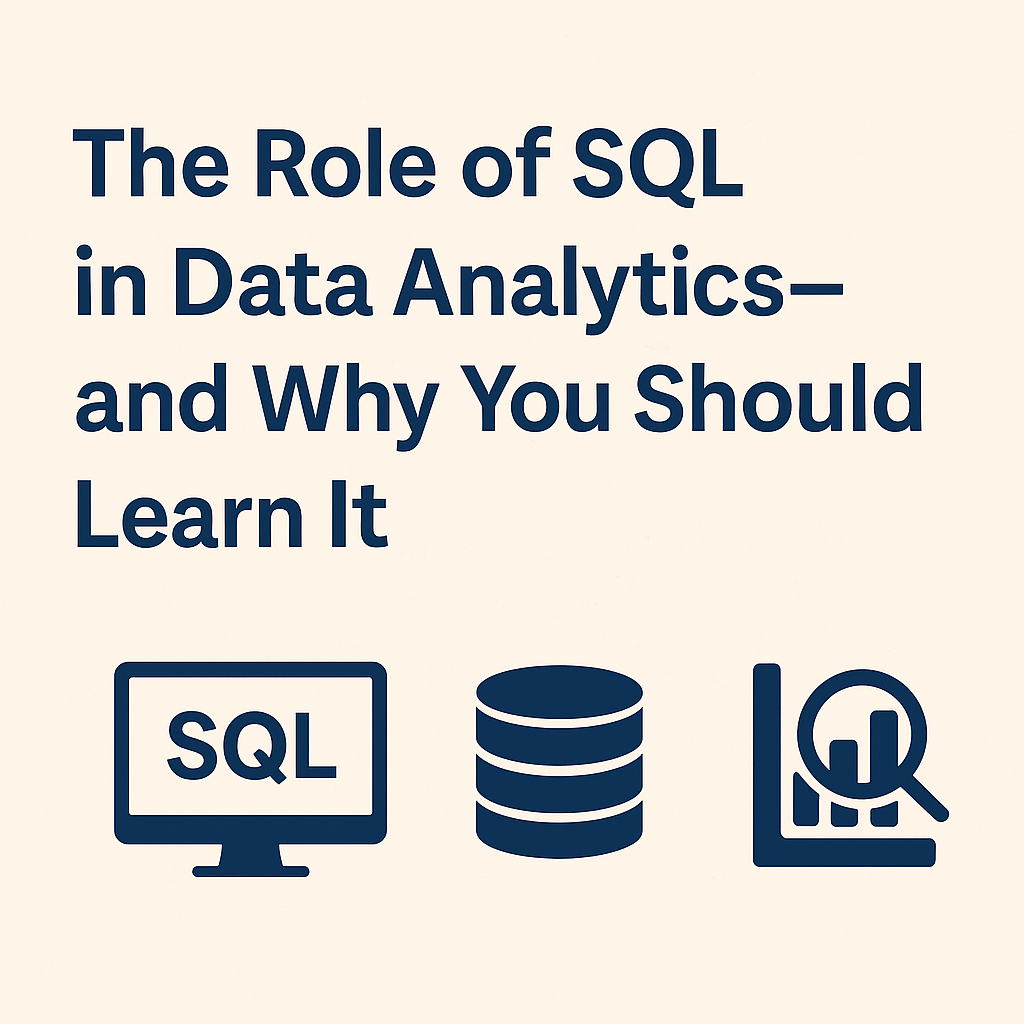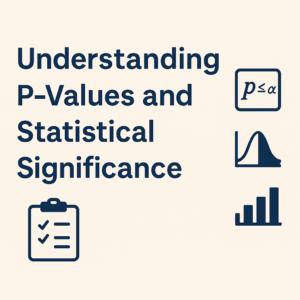In the world of data analytics, flashy tools like Python, R, or Tableau often grab the spotlight. But behind almost every data-driven decision lies a foundational language that does the heavy lifting—SQL (Structured Query Language). Whether you’re working with business dashboards, data pipelines, or machine learning models, SQL remains a critical skill for any data analyst.
In this blog, we’ll explore why SQL matters, what makes it essential for analytics, and how you can start using it effectively.
🔍 What Is SQL?
SQL (pronounced “ess-cue-ell” or “sequel”) is a domain-specific language used to manage and manipulate relational databases. It allows you to query, insert, update, and delete data efficiently.
SQL powers everything from e-commerce platforms and finance systems to marketing dashboards and cloud data warehouses.
💡 Why SQL Is Crucial for Data Analytics
1. Data Lives in Databases
Most business data—sales records, customer info, transaction logs—resides in relational databases like:
- MySQL
- PostgreSQL
- Microsoft SQL Server
- Oracle
- Snowflake
- Google BigQuery
- Amazon Redshift
To extract this data, you need SQL.
2. SQL Is the Gateway to Analysis
Data analysis starts with the right data. SQL helps analysts:
- Filter data by time, region, product, etc.
- Join multiple tables (e.g., customer + order data)
- Aggregate metrics (e.g., total sales, average order size)
- Clean and transform raw datasets
No matter the tool you use—Excel, Python, or Power BI—your pipeline often starts with a SQL query.
3. SQL Is Universally Supported
SQL is tool-agnostic. Whether you’re pulling data into:
- Excel via ODBC
- Power BI or Tableau
- Jupyter Notebook via pandas
- Cloud tools like Looker or Mode
…SQL is the bridge between your data source and your insights.
🧪 What You Can Do With SQL in Analytics
| Function | SQL Example | Use Case |
|---|---|---|
| Select Data | SELECT * FROM sales; | Retrieve all sales records |
| Filter Rows | WHERE country = 'USA' | Segment data by region |
| Aggregate Metrics | SUM(total_amount) | Get total sales |
| Group Data | GROUP BY product_id | Analyze per product |
| Join Tables | JOIN customers ON customer_id | Combine customer + order info |
| Subqueries | (SELECT MAX(salary) FROM employees) | Nested logic |
| Window Functions | RANK() OVER (...) | Ranking, rolling metrics |
⚙️ Real-World Applications
| Industry | SQL Use Case |
|---|---|
| E-commerce | Analyzing cart abandonment or order value |
| Finance | Reconciling transactions and fraud detection |
| Healthcare | Extracting patient and treatment histories |
| Marketing | Tracking campaign performance across channels |
| Operations | Supply chain and logistics data analysis |
🧠 Why Every Analyst Should Learn SQL
✅ High Demand: SQL is listed in nearly every data analyst job description.
✅ Easy to Learn: SQL uses readable English-like syntax.
✅ Scalable: Whether querying thousands or billions of rows—SQL handles it.
✅ Foundational: Even if you move on to Python, R, or big data frameworks (Spark, Hive), SQL remains core.
✅ Collaboration: Data engineers, BI developers, and analysts all use SQL—knowing it helps you collaborate better.
🚀 How to Get Started with SQL
- Learn the Basics
- Start with
SELECT,WHERE,GROUP BY,ORDER BY - Practice with free tools like Mode SQL Tutorial or SQLZoo
- Start with
- Use Sample Databases
- Try datasets like
Chinook,Sakila, orAdventureWorksin tools like MySQL Workbench or SQLite.
- Try datasets like
- Try Real Queries
- Explore datasets from Kaggle and write SQL to answer business questions.
- Apply to Your Work
- Connect SQL to Excel, Power BI, or Python using connectors or libraries.
🏁 Final Thoughts
SQL might not be the trendiest language in the analytics world—but it’s arguably the most essential. Whether you’re cleaning data, preparing reports, or powering a dashboard, SQL enables you to access, shape, and summarize your data with precision and speed.
So if you’re beginning your data analytics journey, don’t skip SQL. Master it—and everything else gets easier.
The next blog will provide some hands on experience with SQL

